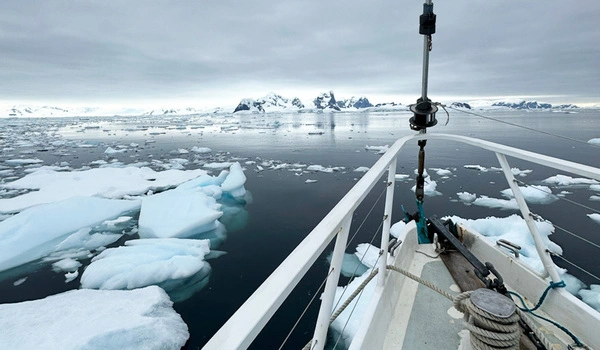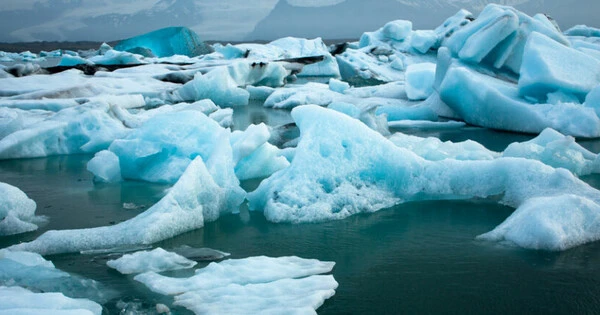Rivers and streams in the Andean Cordillera have been identified as hotspots for greenhouse gas emissions, particularly carbon dioxide, and methane. One reason for this is that the Andean Cordillera is a region of high altitude and rapid glacial melt, which creates a lot of streams and rivers. The rapid flow of water in these systems can cause turbulence and mixing that releases carbon dioxide and methane from the surrounding soils and sediments.
Rivers in the Andean mountains contribute 35% and 72% of riverine emissions of carbon dioxide (CO2) and methane (CH4) in the Amazon basin, the world’s largest river, according to researchers.
According to a new scientific study conducted by researchers from the University of Liège (Belgium), rivers in the Andean mountains contribute 35% and 72% of riverine carbon dioxide (CO2) and methane (CH4) emissions in the Amazon basin, the world’s largest river. The findings of this study have been published in the journal Communications Earth & Environment.
Rivers contribute significantly to global carbon dioxide (CO2) and methane emissions (CH4). The Amazon River, the world’s largest river, contributes significantly to greenhouse gas (GHG) emissions. “It is the world’s largest river in terms of freshwater flow,” explains Alberto Borges, FNRS Research Director at the University of Liège’s FOCUS Research Unit.
All studies on CO2 and CH4 emissions to the atmosphere by Amazon rivers have been conducted so far in the plains of the central Amazon, at least 1,000 km from the Andes, whereas mountain rivers show very different rates of CO2 and CH4 emissions than lowland rivers.
Alberto Borges
We are talking about a discharge of 6,600 cubic kilometres of water per year. It is also the largest hydrographic basin with a surface area of 6,300,000 km2, which is comparable to the size of the United States of 9,834,000 km². In addition, the Amazon River drains the largest rainforest on the planet, which provides rivers with large amounts of organic carbon that is transformed by microbes into CO2 and CH4, and then emitted across surface waters into the atmosphere.”
The Amazon River rises in the Andes Mountains and flows through Peru, Colombia, Ecuador, and Brazil to the Atlantic Ocean. The erosion of rocks at the river’s headwaters in the Andes is the primary source of mineral particles that are transported about 3,000 kilometers across the South American continent to the river’s mouth in Belem, Brazil, where they flow into the Atlantic Ocean. “All studies on CO2 and CH4 emissions to the atmosphere by Amazon rivers have been conducted so far in the plains of the central Amazon, at least 1,000 km from the Andes,” Alberto Borges says, “whereas mountain rivers show very different rates of CO2 and CH4 emissions than lowland rivers.”

Lowland rivers and mountain streams
Three river systems run through the mountains and across the plains. The first is a small mountain stream that flows quickly over steep, rocky terrain. This encourages a rapid physical exchange of gases with the atmosphere. In contrast, steep terrain does not allow for the accumulation of soils that support CO2 and CH4 production.
The second system, the lowland river, is broad and winding, spanning flat terrain. The slower flow of water does not promote as vigorously the physical exchange of gases with the atmosphere as do mountain rivers. However, the higher temperature (lower altitude) promotes the growth of more vegetation (forests), and the flat terrain promotes the accumulation of thicker soils than in the mountains. This should favor CO2 and CH4 production and transport to lowland watercourses. Finally, the flat terrain encourages the development of floodplains linked to lowland rivers, which also provide CO2 and CH4 to the rivers.
“There is a third type of river system,” Gonzalo Chiriboga, a doctoral student in the Chemical Oceanography Unit and the article’s first author, explains. It is known as a ‘piedmont river’ because it is located in the plains at the foot of mountain ranges. Physically, these rivers resemble lowland rivers, but they receive massive amounts of particles from upstream mountain rivers. These particles are temporarily deposited before being resuspended and carried downstream until they reach the ocean. When the particles settle as sediment, they promote the production of CH4 via fermentation. Piedmont rivers can thus be compared to CH factories metaphorically.
Based on these theoretical considerations, we would expect CO2 and CH4 emissions to be very different in mountain, piedmont and lowland rivers. “Until now, CO2 and CH4 emissions have only been measured in lowland rivers in the central Amazon,” the young researcher continues, “so we were missing potentially important pieces of the puzzle, which is critical for the world’s largest river.” One issue has now been addressed in an article published in Communications Earth & Environment, which presents data on Ecuador’s mountain and piedmont rivers along a transect ranging in elevation from 175m to 3990m.
“We discovered that Mountain Rivers in the Andes emit more CO2 and CH4 than piedmont rivers and have significantly higher flux intensities than lowland rivers in the central Amazon.” An important study that shows that streams and rivers in the Andean mountains’ headwaters and piedmont account for 35% of CO2 and 72% of CH4 emissions at the basin scale.





